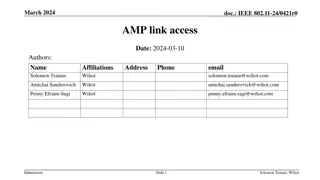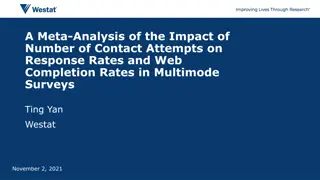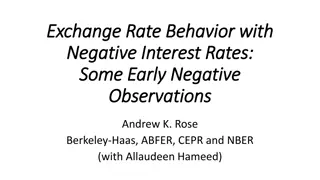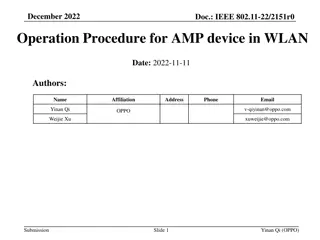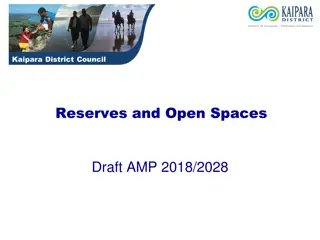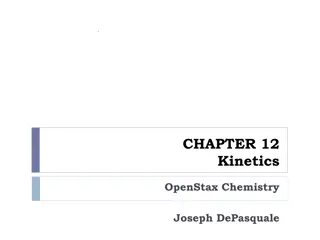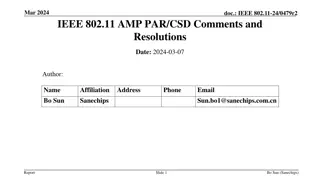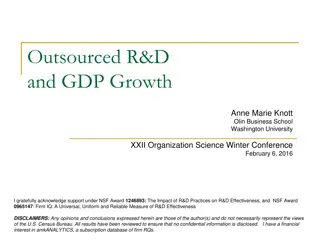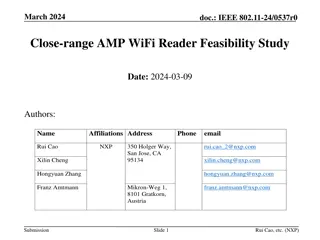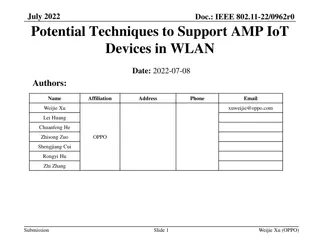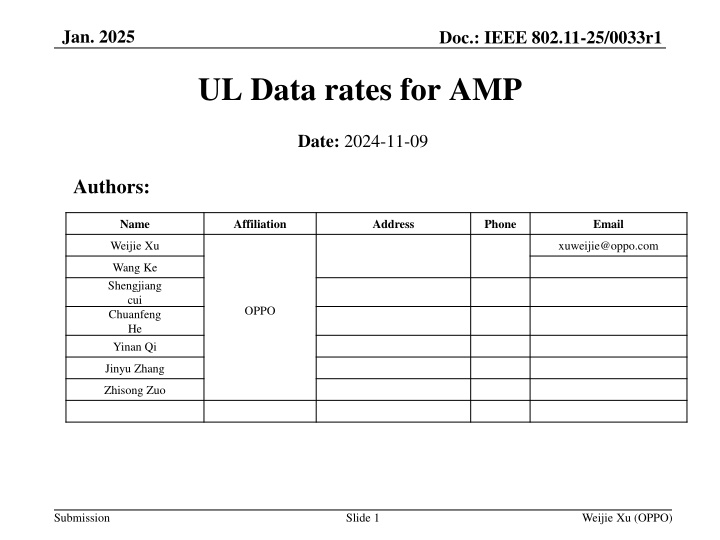
UL Data Rates for AMP in IEEE 802.11-25/0033r1 - Jan 2025 Submission
"Explore UL data rates for AMP in IEEE 802.11-25/0033r1 submission for January 2025. Discussing considerations, link budgets, and simulation assumptions for AMP UL evaluations."
Download Presentation

Please find below an Image/Link to download the presentation.
The content on the website is provided AS IS for your information and personal use only. It may not be sold, licensed, or shared on other websites without obtaining consent from the author. If you encounter any issues during the download, it is possible that the publisher has removed the file from their server.
You are allowed to download the files provided on this website for personal or commercial use, subject to the condition that they are used lawfully. All files are the property of their respective owners.
The content on the website is provided AS IS for your information and personal use only. It may not be sold, licensed, or shared on other websites without obtaining consent from the author.
E N D
Presentation Transcript
Jan. 2025 Doc.: IEEE 802.11-25/0033r1 UL Data rates for AMP Date: 2024-11-09 Authors: Name Affiliation Address Phone Email Weijie Xu xuweijie@oppo.com Wang Ke Shengjiang cui Chuanfeng He Yinan Qi OPPO Jinyu Zhang Zhisong Zuo Submission Slide 1 Weijie Xu (OPPO)
Doc.: IEEE 802.11-25/0033r1 Jan. 2025 Abstract In this submission, we further discuss the UL date rate for AMP and give our proposals. Submission Slide 2 Weijie Xu (OPPO)
Jan. 2025 Doc.: IEEE 802.11-25/0033r1 Recap: DL data rate for AMP In November meeting last year, the DL data rate is agreed in the following motion: Move to include the following content to sub-clause 4 of SFD: The AMP Downlink PPDU in 2.4 GHz shall support the following data rates: 1 Mb/s (for non-Backscatter STAs only) 250 kb/s [Reference DCN# 11-24/1793r1] Submission Slide 3 Weijie Xu (OPPO)
Jan. 2025 Doc.: IEEE 802.11-25/0033r1 Recap: what needs to be considered When determining data rates, the following needs to be taken into account: Use cases Both integrated and non-integrated deployment are needed, e.g., For smart home case, it needs integrated deployment For kinds of vertical applications, e.g., logistics, fresh food transportation etc., non-integrated deployment are needed to reduce the deployment cost and extend the coverage Distributed energizers are much cheaper than AP Various Ambient power source In some cases, e.g., sensors deployed in factories, light can be used to drive AMP STA thus WPT will not be the coverage bottleneck, the communication coverage can be large. Output power from AMP STA The transmission power from active device can be as low as -20dBm The backscattering power from BC device is even lower, considering BC loss For backscattering, the residual interference will affect the data transmission. Submission Slide 4 Weijie Xu (OPPO)
Jan. 2025 Doc.: IEEE 802.11-25/0033r1 Link budget for UL Active AMP(1) Active AMP(1) Parameter Active AMP(2) BC TX Power(dBm) Thermal Noise Floor(dBm) (@20MHz)-101 Noise Figure(dB) Noise Power Level(dBm) Required SNR (dB) Receiver Sensitivity (dB) Link Budget -20 -10 0 -30 -101 -101 -101 7 dB 7 dB 7 dB 7 dB -94 -94 -94 -94 X1 X2 X3 X4 -94+X1 -94+X2 -94+X3 -94+X3 74-X1 84-X2 94-X3 64-X3 For active device, For integrated case, the link budget for DL = ~65dB[4], X1= 9dB,X2=19dB and X3=29dB. For non-integrated case, the link budget for DL = ~90dB[4] (-70dB is assumed as the receiver sensitivity), X2 = -6dB and X3=4dB. For BC device, The link budget for DL = ~65dB[4] (same as that for active device), X4=-1dB. Submission Slide 5 Weijie Xu (OPPO)
Jan. 2025 Doc.: IEEE 802.11-25/0033r1 Simulation assumptions for AMP UL Link level simulations are performed for AMP UL data rate evaluations with the following simulation assumptions. Parameters Values Date Rate 250kpbs/1Mbps/2Mbps/4Mbps Waveform OOK Channel model Channel B/Channel D Chip duration 2 s/0.5 s/0.25 s/0.125 s Sampling rate at AMP AP 20MHz Coding Manchester Receiver type Correlation detection Submission Slide 6 Weijie Xu (OPPO)
Jan. 2025 Doc.: IEEE 802.11-25/0033r1 Simulation results for AMP UL date rate (Channel B) 250K 1M 100 OOK OOK X -6.5 Y 0.1974 X 0 Y 0.1225 X 0.5 Y 0.064 10-1 10-1 X -6 Y 0.1073 BLER BLER 10-2 10-2 10-3 10-3 -9 -8 -7 -6 -5 -4 -3 -2 -1 0 1 2 3 4 5 6 7 8 -4 -3 -2 -1 0 1 2 3 4 5 6 7 SNR (dB) SNR (dB) Submission Slide 7 Weijie Xu (OPPO)
Jan. 2025 Doc.: IEEE 802.11-25/0033r1 Simulation results for AMP UL date rate (Channel B) 4M 2M 100 100 OOK OOK X 3 Y 0.1323 10-1 10-1 X 6.5 Y 0.1052 X 3.5 Y 0.0683 BLER BLER 10-2 10-2 10-3 -3 -2 -1 0 1 2 3 4 5 6 7 8 -4 -3 -2 -1 0 1 2 3 4 5 6 7 8 SNR (dB) SNR (dB) Submission Slide 8 Weijie Xu (OPPO)
Jan. 2025 Doc.: IEEE 802.11-25/0033r1 Simulation results for AMP UL date rate (Channel D) 1M-Channel D 250K-Channel D 100 100 OOK OOK X -2.5 Y 0.134 10-1 10-1 BLER BLER 10-2 10-2 10-3 10-3 -10 -9 -8 -7 -6 -5 -4 -3 -2 -1 0 1 2 3 4 5 6 7 8 -4 -3 -2 -1 0 1 2 3 4 5 6 7 8 SNR (dB) SNR (dB) Submission Slide 9 Weijie Xu (OPPO)
Jan. 2025 Doc.: IEEE 802.11-25/0033r1 Simulation results for AMP UL date rate (Channel D) 2M Channel D 100 OOK X 9 Y 0.089 10-1 BLER 10-2 10-3 -4 -3 -2 -1 0 1 2 3 4 5 6 7 8 9 10 12 13 14 15 16 17 18 11 SNR (dB) Submission Slide 10 Weijie Xu (OPPO)
Jan. 2025 Doc.: IEEE 802.11-25/0033r1 Impact of channel on OOK decoding Chanel delay spread will make it difficult and even impossible for OOK decoding, especially at high data rate. Take 1Mbps as example, 10 sampling for each Manchester chip(assuming 20MHz sampling rate), there may be several high power sampling of in Manchester OFF chip due to delay spread from Manchester ON chip 0.6 X 868 X 877 Y 0.565323 0.35 Y 0.56532 0.5 X 868 0.3 Y 0.272795 0.4 0.25 0.3 0.2 X 877 Y 0.122504 0.15 0.2 0.1 0.1 X 878 Y 0 X 887 Y 0 0.05 0 0 820 840 860 880 900 920 940 960 980 840 860 880 900 920 940 960 980 1000 1020 OOK signal before experience of channel D OOK signal after experience of channel D Submission Slide 11 Weijie Xu (OPPO)
Jan. 2025 Doc.: IEEE 802.11-25/0033r1 Observations Date rate of higher than 4Mbps is not feasible due to: Impact from complicated fading channel (e.g. channel D) Maximum clock rate of 8MHz for the AMP device(i.e. active device) also considering Manchester coding Higher date rate can be achieved for AMP UL due to better receiver and high sampling rate at the AP. 250kbps/1Mbps/2Mbps and 4Mbps are achievable data rates for AMP UL For integrated case, up to 4Mbps is achievable. For non-integrated case, lower data rate of 250kbps is needed. For long-range backscattering, lower data rate of 250kbps/1MHz is needed. Submission Slide 12 Weijie Xu (OPPO)
Jan. 2025 Doc.: IEEE 802.11-25/0033r1 Summary and proposals In this submission, AMP UL link date rate is evaluated and discussed, considering the following Link budget (receiver sensitivity, output power from AMP device), device capability(receiver type, clock capability etc.) Interference, impact from propagation channel etc. With intensive evaluation and comprehensive analysis, the following are proposed: 250kbps/1Mbps/2Mbps and 4Mbps are AMP UL data rates. 2Mbps and 4Mbps is only for active AMP device Submission Slide 13 Weijie Xu (OPPO)
Jan. 2025 Doc.: IEEE 802.11-25/0033r1 Straw Poll #1 Do you agree with the following text: 250kbps/1Mbps/2Mbps and 4Mbps are AMP UL data rates. 2Mbps and 4Mbps is only for active AMP device Yes No Abstain Submission Slide 14 Weijie Xu (OPPO)
Jan. 2025 Doc.: IEEE 802.11-25/0033r1 Reference 1. IEEE 802.11-24/0853r0, Design target and device capabilities for AMP IoT 2. IEEE 802.11-24/1802r0 OOK generation for AMP DL 3. IEEE IEEE 802.11-24/1237r0 AMP Tag Requirements for Close-range Mono-Static Backscattering 4. IEEE 802.11-24/1801r1 data rate for AMP Submission Slide 15 Weijie Xu (OPPO)
Jan. 2025 Doc.: IEEE 802.11-25/0033r1 Appendix 1.Indoor spatial channel models TGn and TGac spatial channel models are adopted as IEEE 802.11ax indoor channel models [1-2] for link level and system level performance evaluation for indoor scenarios. The delay spreads and cluster parameters of indoor TGn and TGac spatial channel models are listed in the Table I. Table I. Delay spreads and cluster parameters of indoor TGn and TGac channel models Model rms Delay Spread (ns) Number Of Clusters Taps/Cluster Propagation Scenario Usage Model A 0 1 1 Flat fading Gaussian Channel-like B 15 2 5,7 Indoor Residential Intra Room, Room to Room C 30 2 10,8 Indoor Residential/Small Office Enclosed Offices Meeting, Conference or Class rooms D 50 3 16,7,4 Indoor Typical Office Offices cubes farms, open areas and large classrooms E 100 4 15,12,7,4 Indoor Large Office/Warehouse Indoor Hotspots with large rooms F 150 6 15,12,7,3,2,2 Large Space Indoor (pseudo- outdoor). Large Indoor Hotspot Airport Submission Slide 16 Weijie Xu (OPPO)






